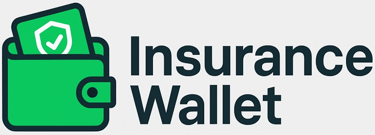🛡️ Named Peril Policies vs. All-Risk Policies – Which One Fits Your Client?
🌟 Introduction
Not all insurance policies work the same way.
Some protect only against specific dangers, while others cover almost everything — unless excluded.
As an advisor, understanding these two policy styles helps you recommend the right protection for each client:
✅ Named Peril Policies
✅ All-Risk Policies (also called open-peril or comprehensive policies)
Let’s break this down in clear, everyday language.
🔎 What Are Named Peril Policies?
A Named Peril Policy covers only the dangers listed in the policy.
If it’s named, it’s covered.
If it’s not named, it’s not covered.
💬 Think of it like:
A menu in a restaurant —
you only get what is written on the menu.
✅ Example
A standard fire insurance policy may cover:
Fire
Lightning
Explosion
Riot & Strike
Storm, Flood, Cyclone
If damage occurs due to something not mentioned — like pest damage or gradual wear-and-tear — the insurer does not pay.
🧠 When to Suggest Named Peril Policies
Recommend when:
Client wants basic, essential coverage
Budget is limited
Risks are predictable and known
Customer prefers clear listed protection
Examples include basic fire, burglary, marine, and crop policies.
Good for clients who want affordable protection for common risks.
🌐 What Are All-Risk Policies?
An All-Risk Policy covers every type of accidental loss, except those specifically excluded.
If a loss happens and it’s not in the exclusions list, it’s covered.
💬 Think of it like:
A buffet —
you can have anything, except what is marked “not available.”
✅ Example coverage areas
Accidental damage
Misplacement
Mysterious disappearance
Accidental breakage
These policies are common in:
Home contents insurance
Electronics & gadgets
Marine cargo open cover
Comprehensive property insurance
Engineering & construction policies
🧠 When to Suggest All-Risk Policies
Recommend when:
Clients want broad, flexible coverage
They own valuable or sensitive items (jewellery, laptops, machinery)
They prefer convenience — not worrying about listed risks
Their risk environment is uncertain or varied
Good for clients who want maximum peace of mind and can invest a bit more.
💰 Premium Difference
All-Risk policies generally cost more than Named Peril policies because they cover more uncertainty.
Named Peril = Specific risks → Cheaper
All-Risk = Broad protection → Higher premium
📌 How to Explain This to Clients
Use simple language with them:
Named Peril Policy covers only what’s listed.
All-Risk Policy covers everything except what’s excluded.
Or even simpler:
“Named policy tells you what is covered.
All-risk policy tells you only what is not covered.”
That’s a golden line for field advisors 👆
🎯 Advisor Recommendation Strategy
Ask your client:
1️⃣ “Do you know your risks clearly?”
→ Named-peril policy may be enough.
2️⃣ “Do you want broader peace-of-mind cover?”
→ Suggest an All-risk policy.
3️⃣ “Is budget a concern?”
→ Start with Named Peril; upgrade later.
🧠 Quick Recap
Named Peril Policy: Protects against listed dangers only
All-Risk Policy: Covers all accidental losses except exclusions
Named = Cheaper, targeted
All-Risk = Broader, more premium, more peace of mind
✅ Final Tip for Agents
Offer two options:
“Basic cover or comprehensive cover — which suits your current needs?”
When clients feel they choose their protection level, sales become easier and trust improves.
